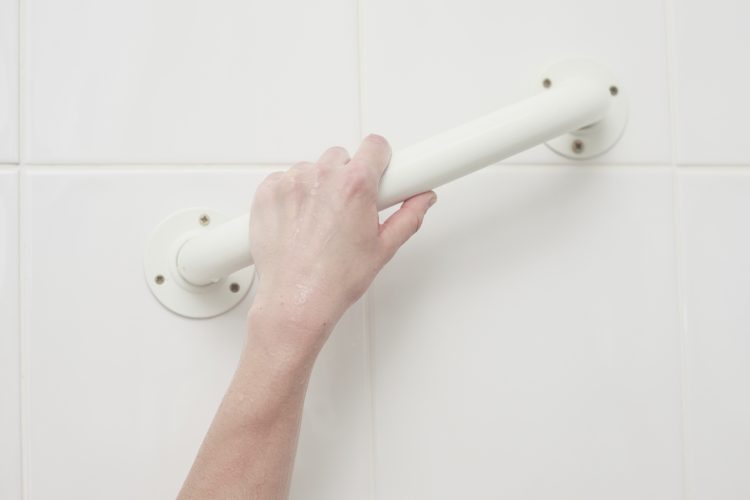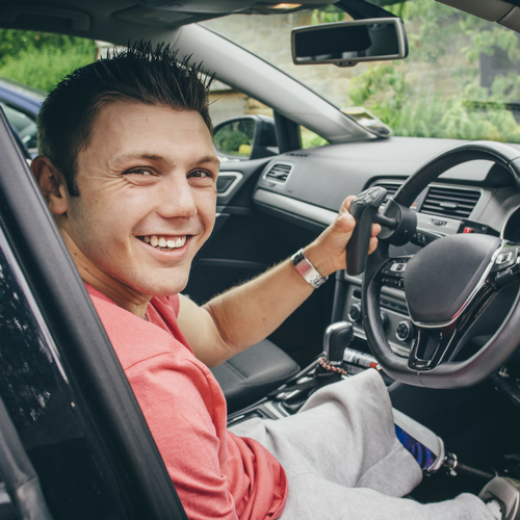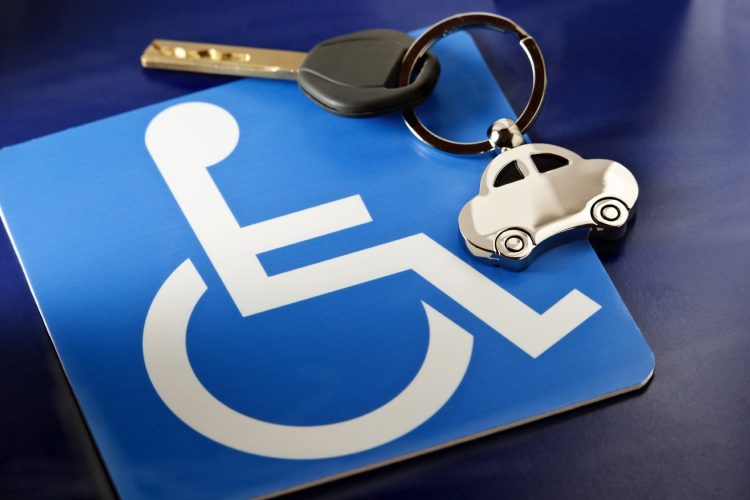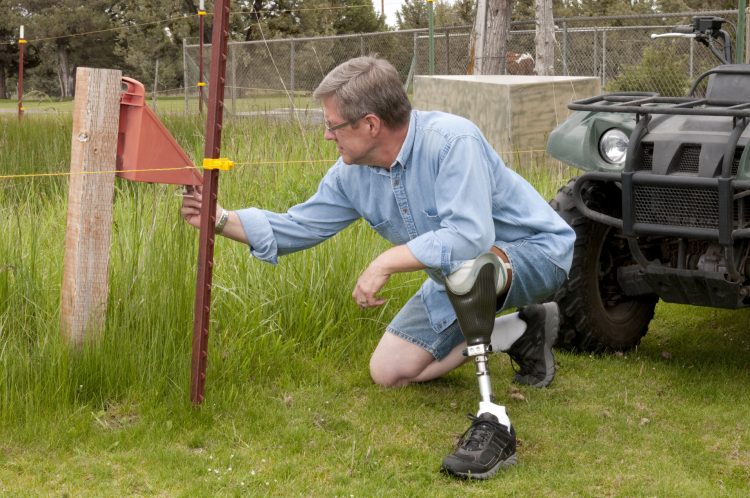- Home
- |
- About Us
- |
- News and Events
- |
- Resources
- |
- Contact
- |
- Donate today
Speaking to another amputee can make a real difference to your recovery and ease your concerns. We call this type of assistance Peer Support.
Following surgery, you will need time to recover. It is also a time to set goals about your journey ahead. Here, we help to guide you through the process to navigate your pathways forward.
Effectively managing your short and long term health will lead to better outcomes and prevent future problems.
Getting the right kind of prosthesis to suit your lifestyle needs and daily level of activity is important.
People are often concerned about the costs involved in getting a prosthesis. In Australia, there are a number of different funding schemes and it can be easy to get confused and to know what you are eligible for.
Home / Steps to Recovery / Getting Yourself Back on Track
One of the most important things for many people is getting our lives back to the way it was prior to amputation. Obviously some changes will need to be made and you may experience daily challenges, but in most cases these can be overcome in time.
Heading home for the first time can raise mixed feelings for you and your family; excitement, hope and anxiety. Moving around a hospital can be very different to the way you can move around your home. In some cases people adjust to their amputation in hospital and rehabilitation, but moving around your home can be quite different.
Many homes have stairs to access the property, carpet instead of vinyl floors, toilets and bathrooms that are not always easily accessible and doorways that are small and difficult to enter or exit.
Ensuring that you are going to a place that is safe and accessible is important. Your occupational therapist will discuss options for modifications and assistive devices prior to your discharge. They may arrange a visit to your place of residence (with you where possible), to discuss your needs.
Ensuring that you are going to a home that is safe and accessible is very important. Your occupational therapist will discuss options for home modifications and assistive devices prior to your discharge from hospital or rehabilitation. In most cases they will arrange a home-visit to (with you where possible) to assess, discuss your needs and plan for any changes which may be required.

Remember if you are unsure of something ask your healthcare providers are there to help you.
Although changes may need to be made and you will face some challenges, becoming an amputee may mean that you can do most of the things you used to do, but in a different way. Sometimes it’s just a matter of careful planning, organisation and learning as you go.

Driving may be an important part of your independence. If you have medical approval and your health checks out you will be able to have your licence re-instated. In some states/territories people are required to be re-tested for their driver’s license and/or have restrictions placed on their licenses such as: ‘automatic only’ vehicles. Your occupational therapist can assist you with information about driving.
Vehicles can be modified to suit your needs and there are a number of companies which specialise in the re-fit of left-foot accelerator pedals, wheelchair hoists and the installation of spinner knobs or hand controls. Some people even manage to ride their motorbikes again and drive trucks. Push bikes and motorcycles can also be modified if required.
The modification of a vehicle can vary depending on the age of your car and the state you reside in. Some states offer financial support via their aids and equipment programs or the National Disability Insurance Scheme.
Your Social Worker will help you with the application process to obtain state government concessions if you are eligible. These can include:
While many amputees will be able to drive, some may not. If that is the case it’s important to plan for using public transport or taxis. Consider how you will get in and out of vehicles, accessibility of public transport, and whether you need assistance.
If you are unable to drive you may be eligible for public transport or a Multi-Purpose Taxi Program card. The Multi-Purpose Taxi Program provides the user with a financial discount on the metered fare. The discount value can differ in each state or territory. If you plan on travelling interstate, the Taxi Directorate can allocate you interstate vouchers which can be used while you are away.
If walking a long distance is difficult for you, a disabled parking permit will allow you to park closer to buildings and venues.
A person may hold a permit if they have a significant permanent disability. Application forms need to completed by a doctor and can be obtained from local councils or state authorities. Permits are recognised throughout Australia, however parking conditions are different between states and territories, so it’s good to check before travelling.
Accessible public transport (bus, train, tram and ferries) is important for all people. Accessible transport doesn’t apply only to people living with a disability but also relates to pregnant women, parents using a pram and older people. Some people with a disability may be eligible for public transport concession. To find out more about local public transport, accessibility and concessions speak to the public transport authority in your area.

Going on holidays and travelling is a part of life for most people. Even if you have had an amputation there is no reason why your future travel plans should change.
When travelling it is good to be prepared and check everything prior to making bookings. If you think you will require any transport or accommodation assistance, make sure that you ask what is available and whether it suits your needs.
While many hotels offer accessible rooms not all accessible rooms comply with the Australian standard, making it difficult for people to be independent away from home. If you have specific requirements relating to your accommodation needs, speak to a representative from the hotel rather than the appointed booking agent. If you are unsure about their description of a room or the bathroom in the hotel, ask the representative to send photos of space, to you.
Travelling on planes, if you are a prosthetic or wheelchair user can sometimes be stressful. All airlines are required to support the needs of travellers with a disability. For information about the accessibility and disability policies of airlines visit the special needs sections of their websites.
If you require assistance with air travel and need support to go to and from the gate lounge and/or onto the aircraft, advise the carrier at the time of making your booking. If you plan to take assistive devices with you; like your wheelchair, let the airline know at the time of booking.
If you are travelling overseas, it is a good idea to carry any prosthetic lotions or gels with you in your ‘carry-on’ luggage. It’s also a good idea to take spare socks and liners in your hand-luggage.
Some amputees chose to ‘carry-on’ their water/shower limb, rather than risk packing it in checked baggage.
Providers of bus and train travel usually have accessible vehicles available for people with disabilities. This may not be the case in other countries around the world. Confirm any requirements you may have with the transport company, and seek additional information if needed.

Returning to work after an amputation is an important aspect of ‘getting your life back’. Depending on your situation and type of amputation you may or may not be able to do the same job you had prior to losing your limb/s.
Some companies will support you with a return to work program and state and federal governments have programs to assist in making the return to work easier. And if possible, try and stay in touch with your employer during your time in hospital and rehabilitation – it’s a great way to keep connected and plan your future.
There are a number of government services to assist people with disability pursue their employment goals and pathways.

JobAccess is the main Australian Government initiative that aims to support the employment of people with disability. It is a hub of information and benefit to not only job seekers and workers, but employers and colleagues also.
Assistance for people with disability include details about: financial support; Disability Employment Services; advice on changing or keeping a job; advice on workplace modification and flexibility; and, access to training and current vacancies. Assistance for employers include details about: financial support; tools and resources; creating flexible work environments; recruiting and retaining staff; rights and responsibilities; and, disability employment toolkits. To learn more visit Job Access
Employment Assistance Fund (EAF)
The EAF gives financial help to eligible people with disability and employers buy work related modifications, equipment, Auslan services and workplace assistance and support services. The EAF is available to eligible people who are about to start a job, are self-employed or who are currently working. It is also available to people who need assistance or special work equipment to look for and prepare for a job.
The EAF can assist with purchasing work related modifications and services such as:
To learn more visit the employment assistance fund on the Job Access site
The Australian Government and State/Territory Governments are working towards attracting more people with disability into public service roles. Some have dedicated recruitment schemes which allow for people with disability to apply for vacancies and be considered for roles. Some jurisdictions also have targets to increase the number of people with disability employed in public sector positions.
Some people aren’t aware that if they are an NDIS participant, they can build employment support in their NDIS Plan. This is known as ‘customised employment’ and linked to a person’s employment goals.
Customised Employment is a person-centred approach which matches the skills, interests and support needs of an NDIS participant to meet a business need or create a new market (self-employment or micro-enterprise).
Currently support to access employment support sits within ‘Finding and Keeping A Job’, which is connected to the Capacity Building section of a participants NDIS Plan. If this interests you to speak to your Local Area Coordinator to find out more.
Have your read the latest edition of Amplified? Why not download a copy today?
Keep up to date with our latest news, events and information
